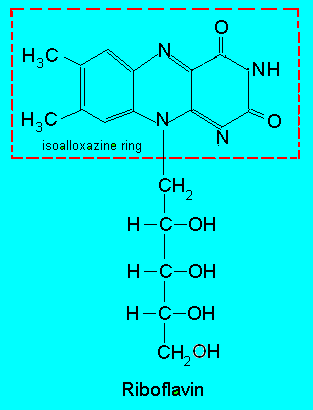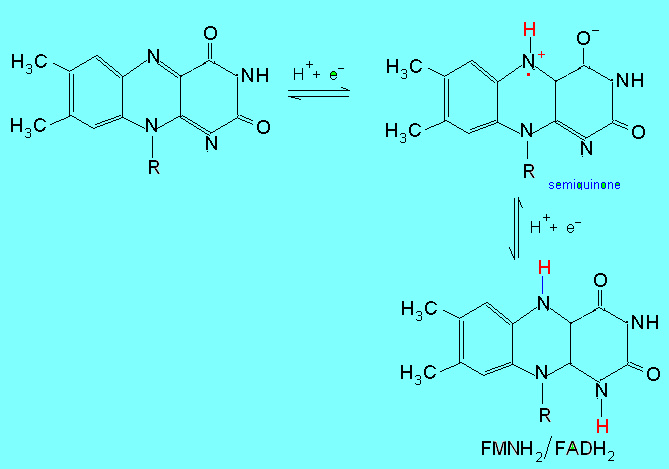|
Vitamin B2 (Riboflavin)
FADH2 is generated during fatty acids degradation (called b-oxidation) in mitochondria and peroxisomes as well as during the tricarboxylic acids cycle. The main role of FADH2 is to feed reducing powers (electrons) to the electron transport chain with the end result being ATP synthesis. An example of a well studied flavoenzyme is glutathione reductase, which catalyzes the NADPH-dependent
reduction of oxidized glutathione (GSSG). As seen in the section on antioxidant defense systems, the reduced
glutathione (GSH) is necessary for the removal of hydrogen peroxide in erythrocytes and metabolically active
cells. The GSSG is reduced to GSH according to the reaction: For an indepth discussion on the mechanism of the above reaction the reader should refer to an excellent general biochemistry textbook. (Biochemistry, D. Voet and J.G. Voet, 3rd. Edition Volume 1, John Wiley & Sons, New York, 2003). |



